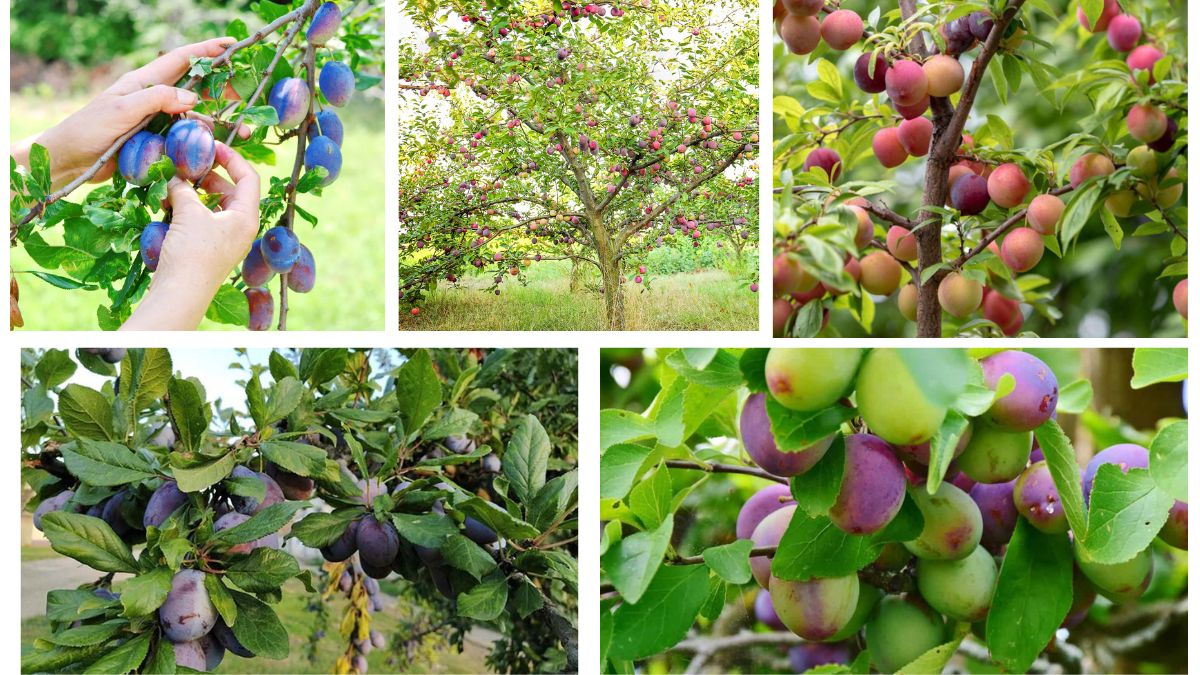Plum trees (Prunus domestica) are among the most rewarding and attractive fruit trees for home gardens and orchards. With their charming spring blossoms, lush summer foliage, and sweet, juicy fruits in late summer, plum trees offer beauty and bounty in equal measure. However, one of the most important — and often overlooked — aspects of growing a healthy, productive plum tree is proper watering.
Water is vital for every stage of a plum tree’s growth, from supporting flowering and fruit set to helping fruits swell and ripen. Too little water can lead to small, dry fruits and poor yields, while overwatering invites root rot, fungal diseases, and stress. So — how often should you water a plum tree? The answer depends on various factors, including the tree’s age, soil type, climate, and season.
In this comprehensive guide, we’ll explore the optimal watering schedule for plum trees, how to adjust it for different conditions, and how to recognize signs of overwatering or drought stress.
Why Is Proper Watering Important for Plum Trees?
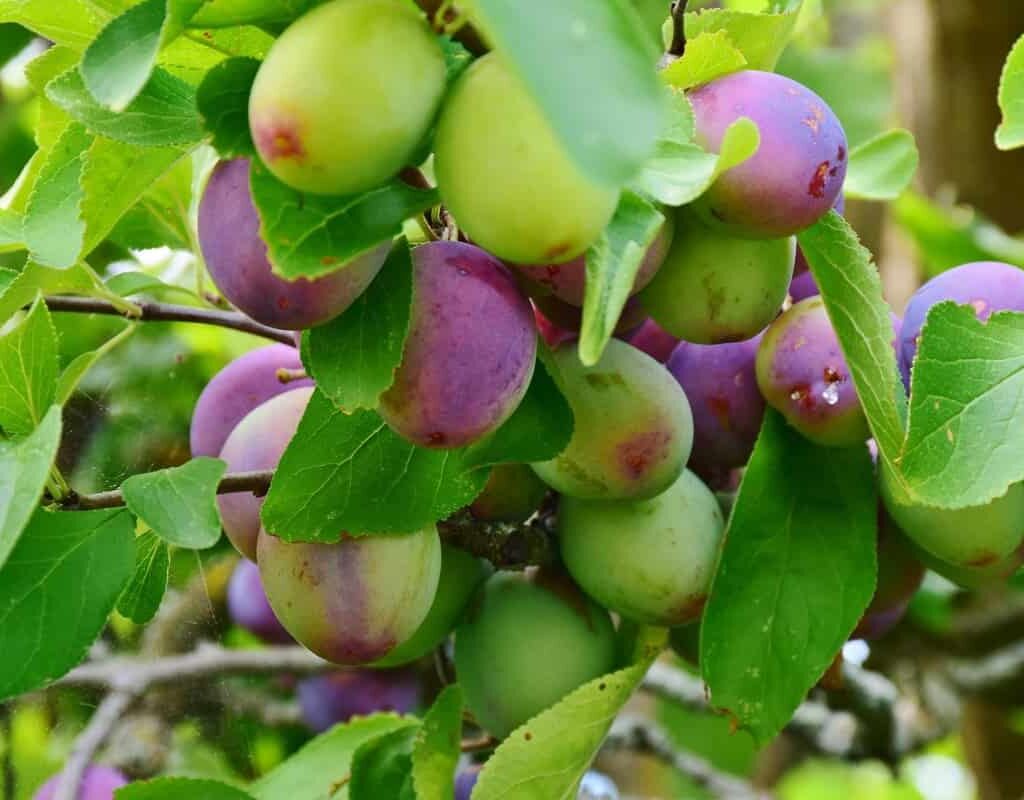
Water plays an essential role in:
- Supporting photosynthesis and nutrient absorption.
- Maintaining turgor pressure in leaves and fruit.
- Aiding in fruit development and sugar formation.
- Preventing issues like fruit drop, wilting, and poor fruit size.
- Ensuring healthy, resilient root systems that can withstand environmental stress.
Plum trees, particularly when young or in fruiting stages, are sensitive to inconsistent moisture levels. Correct watering ensures you get not only a bountiful harvest but also long-term tree health.
How Often Should You Water a Plum Tree?
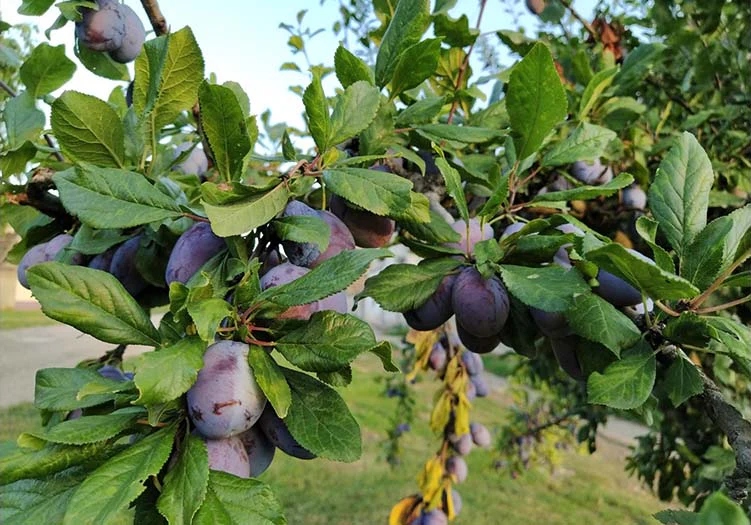
The watering frequency for a plum tree changes depending on the tree’s age and season:
| Tree Age | Watering Frequency |
|---|---|
| Newly planted (first year) | Every 2–3 days initially, then 1–2 times a week |
| Young (1–3 years) | Every 5–7 days depending on soil moisture and weather |
| Mature (3+ years) | Every 7–14 days during dry periods |
| Fruiting season | Increase frequency to maintain even moisture |
| Dormant season (winter) | Water sparingly, only in extended dry conditions |
Seasonal Watering Needs for Plum Trees
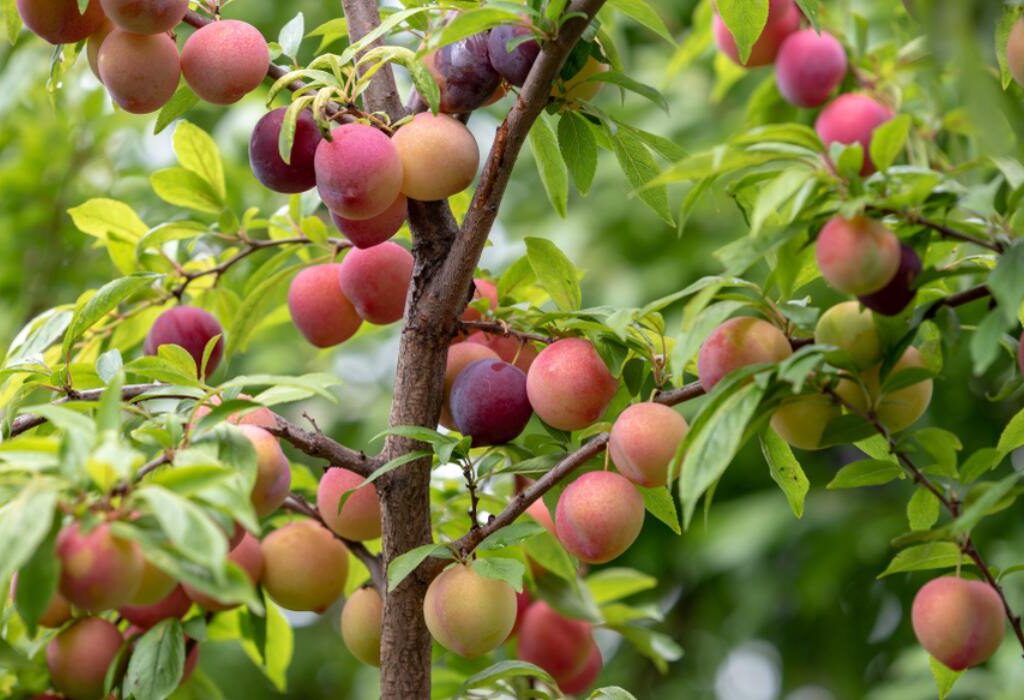
Spring
- Bud break, flowering, and leaf development occur.
- Water deeply once or twice a week, depending on rainfall.
- Consistent soil moisture ensures healthy blooms and successful fruit set.
Summer
- Peak season for fruit development, making water supply critical.
- Increase watering to every 5–7 days for mature trees.
- In hot, dry, or windy weather, water every 3–5 days.
- Maintain even soil moisture to prevent fruit splitting and leaf scorch.
Autumn
- As fruit harvest concludes, reduce watering frequency.
- Water every 10–14 days if rainfall is insufficient.
- After fruiting, gradually taper watering to prepare the tree for dormancy.
Winter
- Dormant plum trees need minimal water.
- In dry, frost-free regions, water once every 3–4 weeks if the soil is dry.
- Avoid soggy soil to prevent root rot.
How Much Water Does a Plum Tree Need?
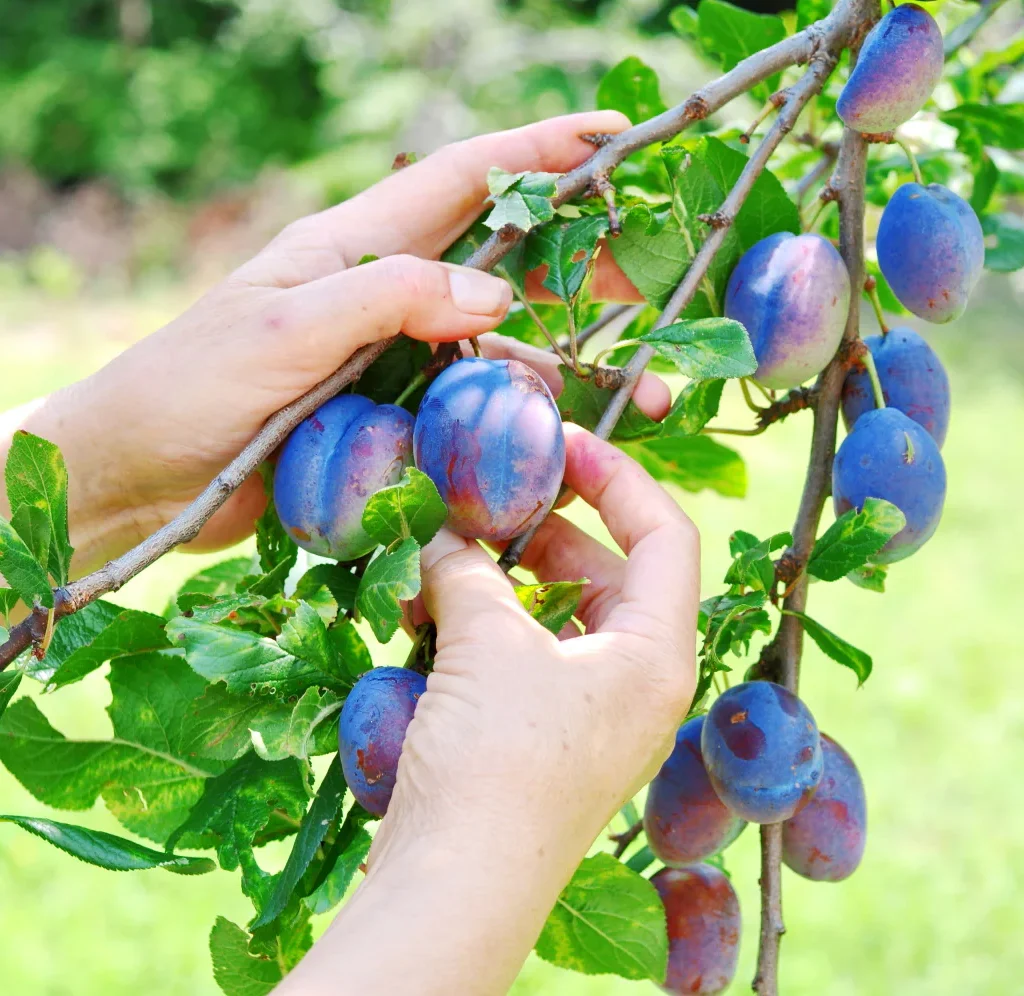
Water quantity depends on tree size, soil type, and weather.
General Guidelines:
- Newly planted trees: 10–15 liters (2.5–4 gallons) per watering.
- Mature trees: 50–100 liters (13–26 gallons) per session.
- During fruit development: Ensure soil is moist to a depth of 18–24 inches.
- Container-grown plum trees: Water when the top 1–2 inches of soil feel dry.
Deep watering encourages a deep root system, improving drought resistance and overall stability.
Watering Plum Trees in Containers
Dwarf and semi-dwarf plums in pots dry out faster than those in the ground.
Tips for container-grown trees:
- Check soil moisture daily during warm months.
- Water when the top 2 inches of soil are dry.
- Use pots with adequate drainage.
- Avoid leaving water pooled in saucers beneath pots.
In summer, container plums may require water every day or every other day.
Soil Type and Watering Frequency
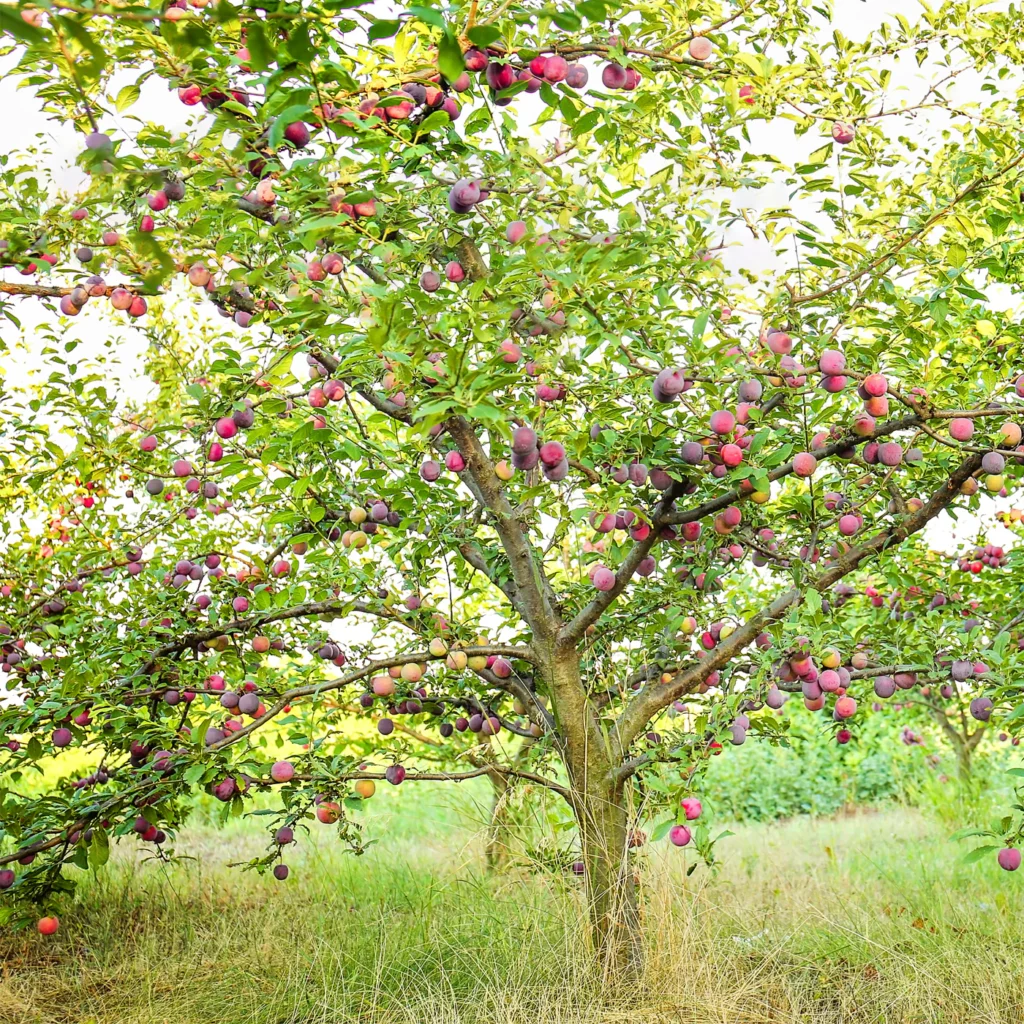
The soil’s water-holding capacity influences how often you should irrigate.
| Soil Type | Watering Frequency |
|---|---|
| Sandy soils | Drain quickly; water more often |
| Loamy soils | Ideal balance; retain moisture well |
| Clay soils | Hold water longer; water less frequently |
Amend clay soils with compost or organic matter to improve drainage and aeration.
Climate and Weather Considerations
In hot, dry, or windy regions:
- Increase watering during heatwaves.
- Use organic mulch around the tree’s base to retain moisture and regulate soil temperature.
In humid or rainy areas:
- Decrease watering frequency.
- Always check soil moisture before watering to avoid over-saturation.
Best Time of Day to Water Plum Trees
The ideal times for watering are:
- Early morning: Allows water to soak deeply before midday heat increases evaporation.
- Late afternoon: If necessary, but avoid evening watering as it encourages fungal diseases due to overnight wet foliage.
Mulching for Moisture Retention
Mulching has several benefits for plum trees:
- Conserves soil moisture.
- Reduces weed competition.
- Regulates soil temperature.
- Adds organic matter as it decomposes.
Recommended mulch materials:
- Wood chips
- Straw
- Shredded leaves
- Grass clippings
Apply a 2–4 inch layer around the tree, keeping it 6–8 inches away from the trunk to prevent rot.
Signs of Overwatering and Underwatering
Signs of Underwatering:
- Drooping or curled leaves.
- Dry, cracked soil.
- Premature fruit drop.
- Small, dry, or shriveled fruit.
- Brown leaf edges.
Signs of Overwatering:
- Yellowing leaves.
- Persistent soggy soil.
- Root rot (dark, mushy roots).
- Fungal issues like crown rot or gummosis (sap oozing from bark).
Pro Tip: Use a soil moisture meter or dig down 4–6 inches — if dry at that depth, it’s time to water.
Common Watering Mistakes to Avoid
| Mistake | Effect | Solution |
|---|---|---|
| Frequent, shallow watering | Shallow, drought-sensitive roots | Deep, infrequent watering |
| Overwatering during dormancy | Root rot and fungal issues | Reduce winter watering |
| Watering during midday heat | Rapid evaporation, leaf scorch | Water early morning |
| Ignoring soil and weather | Uneven moisture and plant stress | Adjust based on conditions |
When to Reduce or Stop Watering Plum Trees
After fruit harvest:
- Reduce watering frequency gradually as the tree prepares for dormancy.
- In dry climates, provide occasional deep watering to prevent root stress.
In winter:
- Only water during extended dry spells when the ground isn’t frozen.
Conclusion
Watering is a vital aspect of plum tree care that directly influences tree health, fruit yield, and overall orchard success. Understanding when and how much to water ensures steady growth, large, sweet fruits, and a tree resilient against disease and drought.
By adjusting your watering habits based on the tree’s age, soil type, climate, and season, you’ll help your plum tree thrive. Remember to prioritize deep, infrequent watering, mulch for moisture retention, and monitor soil moisture consistently.
With careful attention and a balanced watering routine, your plum tree will flourish, rewarding you with fragrant blossoms and a bounty of juicy, flavorful plums for years to come.
